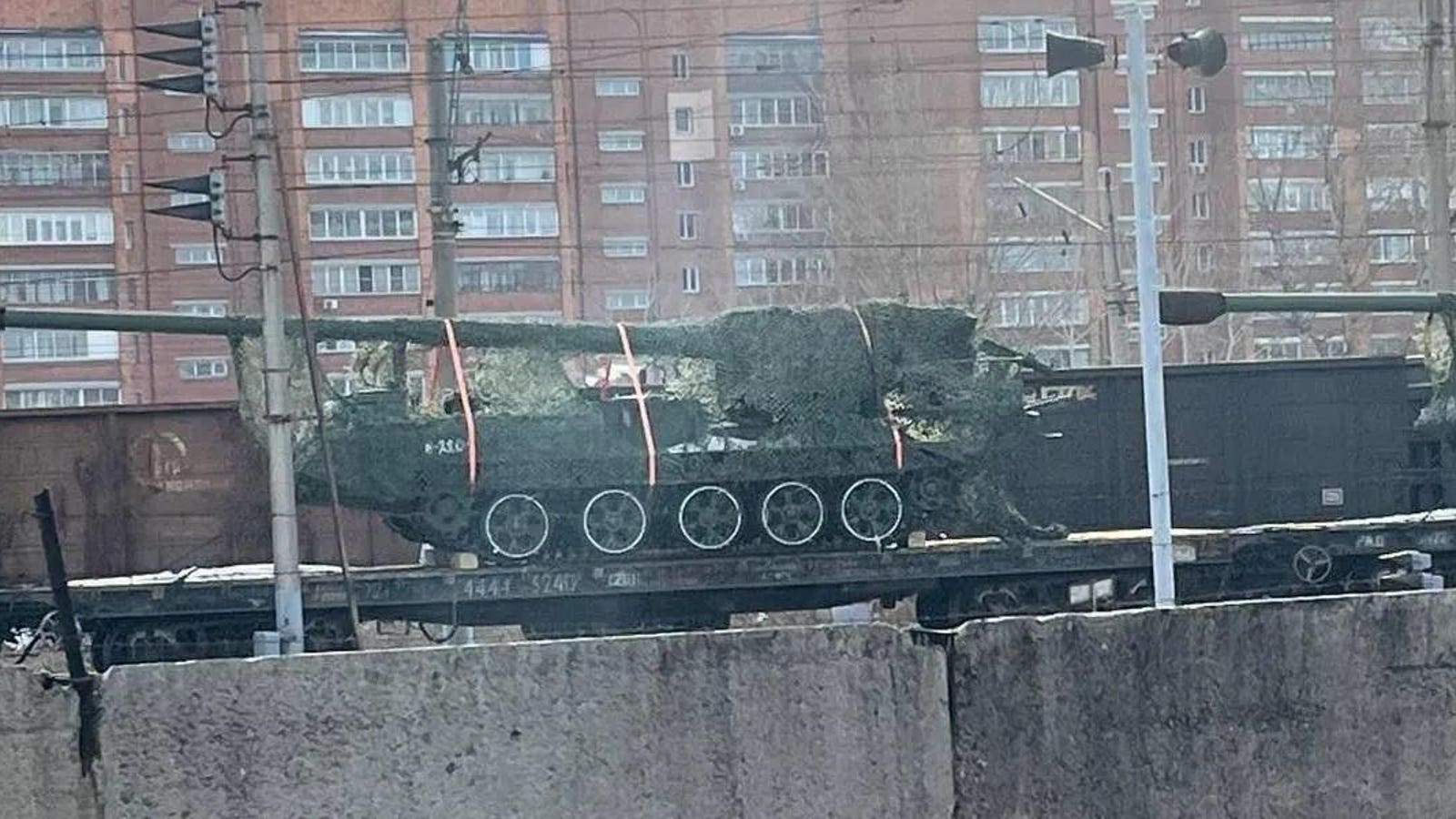M1989s on a train in Russia.
Via Special Kherson Cat
In a single coordinated strike, the Ukrainian 14th Regiment of Unmanned Drones may have damaged three North Korean M1989 howitzers.
One of the regiment’s drones spotted the trio of tracked 170-millimeter guns—“wonder weapons,” according to one Ukrainian battalion—in treeline hideouts reportedly somewhere in Kursk Oblast in western Russia on or just before Tuesday.
The drone crew relayed the howitzers’ coordinates to a nearby Ukrainian battery apparently equipped with High-Mobility Artillery Rocket Systems. The wheeled HIMARS, around 40 of which Ukraine has received from U.S. stocks, launched at least one M30 rocket that burst over the treeline, scattering hundreds of grenade-sized submunitions that rained down on the M1989s and their crews.
How much damage the attack inflicted is hard to assess. But the Tuesday raid had the potential to damage or destroy a significant portion of the M1989s North Korea has shipped to Russia to help make good Russia’s heavy losses of artillery and other heavy equipment.
Pyongyang has given Moscow hundreds of vehicles. Not just M1989s, which lob 100-pound shells a distance of 25 miles, but also anti-tank missile vehicles, rocket launchers and air defense vehicles. Prior to the Tuesday attack, Ukrainian drones and artillery had already knocked out at least one M1989 as well as some of the Bulsae-4 anti-tank launchers; a confused Russian drone operator blew up one of the North Korean air defense systems.
A sizable Ukrainian force occupied a 250-square-mile salient in Kursk until last week, when an elite Russian drone unit—the Rubicon Center of Advanced Unmanned Systems—launched a devastating wave of attacks on the main supply line supporting the Ukrainian garrison in the town of Sudzha, the center of the salient.
At the same time, a fresh contingent of North Korean troops—at least the second wave of North Koreans to deploy to Ukraine and western Russia since late last year—attacked in Kursk, further squeezing the Ukrainian force in the oblast. Last week, the Ukrainian survivors retreated back to Ukraine, leaving behind some precious heavy equipment.
Amid the retreat, Ukrainian drones and artillery have continued to bombard Russian and North Korean forces in Kursk.
Submunitions strike North Korean howitzers.
Ukrainian defense ministry capture
Heavy losses, deep reserves
Kursk was a Pyrrhic victory for the Russians and North Koreans. They suffered potentially tens of thousands of casualties and lost hundreds of vehicles prying the Ukrainians from Kursk. Ukrainian losses were lighter, although hardly light.
But North Korea has deep reserves of troops and equipment, including potentially hundreds of additional M1989s. And Pyongyang’s support for Moscow’s war effort doesn’t appear to be flagging despite the high cost in people and hardware.
The same can’t be said of U.S. support for Ukraine’s own war effort under the increasingly Russia-aligned administration of President Donald Trump. The White House has been leaning on Ukrainian President Volodymyr Zelensky to agree to ceasefire terms that favor Russia and would essentially legitimize the Russian occupation of a vast swath of Ukrainian soil.
As part of that pressure campaign, Trump temporarily suspended U.S. aid and intelligence sharing to and with Ukraine late last month. That suspension threatened the supply of M30 rockets to Ukrainian HIMARS batteries—and also threatened the provision of satellite surveillance data that steers Ukrainian drones toward the locations of hidden high-value targets such as those North Korean M1989s.
